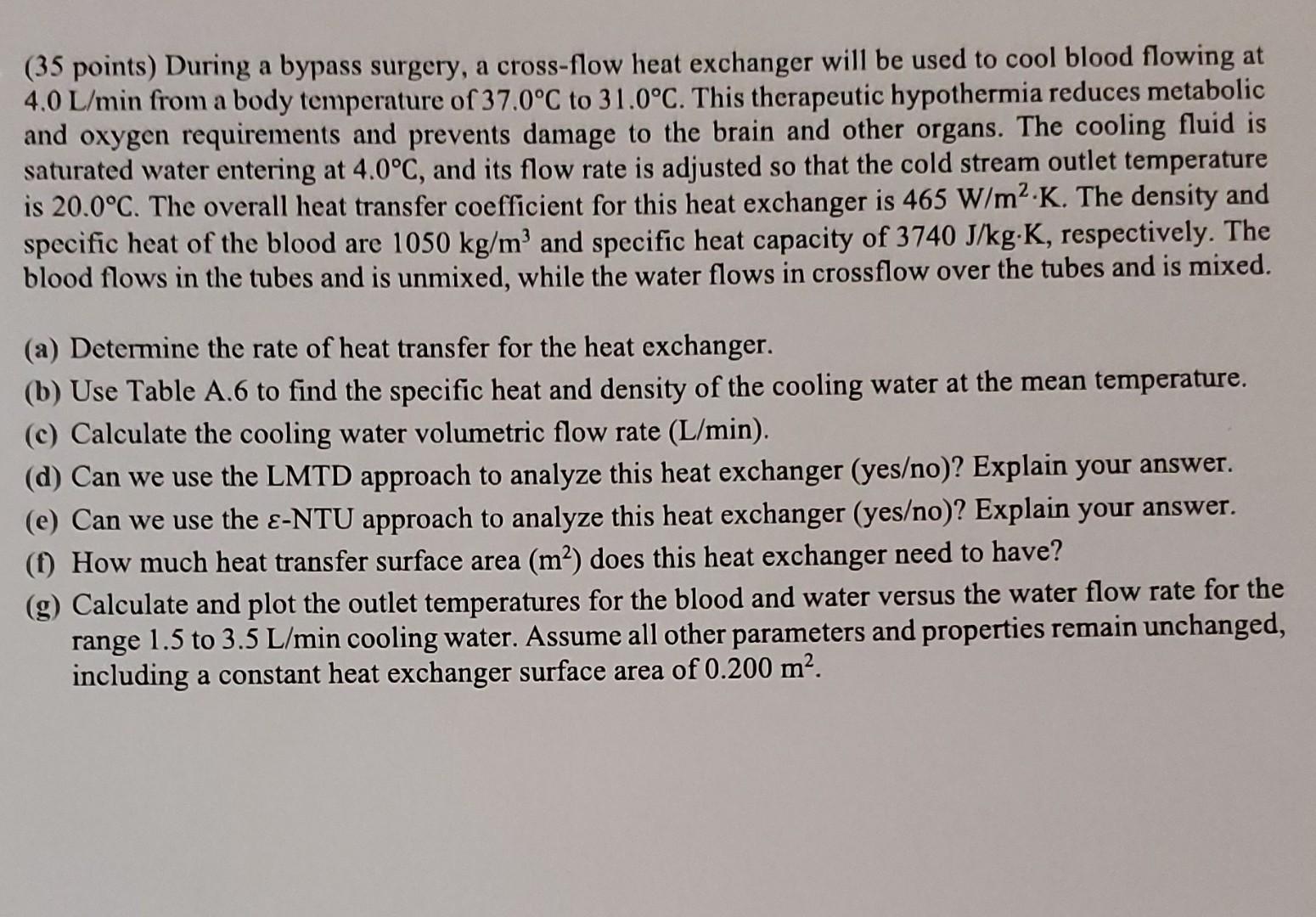Answered step by step
Verified Expert Solution
Question
1 Approved Answer
(35 points) During a bypass surgery, a cross-flow heat exchanger will be used to cool blood flowing at 4.0L/min from a body temperature of 37.0C



(35 points) During a bypass surgery, a cross-flow heat exchanger will be used to cool blood flowing at 4.0L/min from a body temperature of 37.0C to 31.0C. This therapeutic hypothermia reduces metabolic and oxygen requirements and prevents damage to the brain and other organs. The cooling fluid is saturated water entering at 4.0C, and its flow rate is adjusted so that the cold stream outlet temperature is 20.0C. The overall heat transfer coefficient for this heat exchanger is 465W/m2K. The density and specific heat of the blood are 1050kg/m3 and specific heat capacity of 3740J/kgK, respectively. The blood flows in the tubes and is unmixed, while the water flows in crossflow over the tubes and is mixed. (a) Determine the rate of heat transfer for the heat exchanger. (b) Use Table A.6 to find the specific heat and density of the cooling water at the mean temperature. (c) Calculate the cooling water volumetric flow rate (L/min). (d) Can we use the LMTD approach to analyze this heat exchanger (yeso)? Explain your answer. (e) Can we use the -NTU approach to analyze this heat exchanger (yeso)? Explain your answer. (f) How much heat transfer surface area (m2) does this heat exchanger need to have? (g) Calculate and plot the outlet temperatures for the blood and water versus the water flow rate for the range 1.5 to 3.5L/min cooling water. Assume all other parameters and properties remain unchanged, including a constant heat exchanger surface area of 0.200m2. TABLE A.6 Thermophysical Properties of Saturated Water n TABLE A. 6 Continued
Step by Step Solution
There are 3 Steps involved in it
Step: 1

Get Instant Access to Expert-Tailored Solutions
See step-by-step solutions with expert insights and AI powered tools for academic success
Step: 2

Step: 3

Ace Your Homework with AI
Get the answers you need in no time with our AI-driven, step-by-step assistance
Get Started


